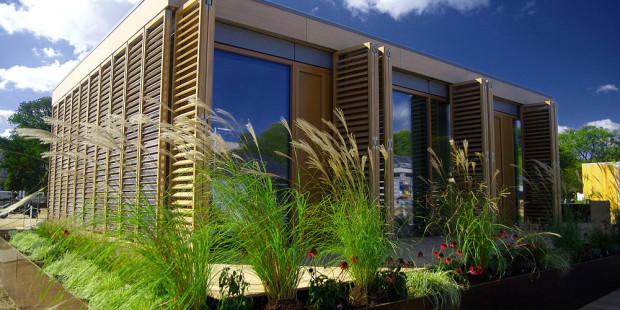Five Established Models For Multi-Site Church Ministry

Recently, I wrote about ways to expand your church congregation as a means to grow your church building expansion fund. But when it comes time to build your new location, you may want to consider an emerging trend in managing and maximizing your message – the concept of multi-site fellowship.
The trend started in the mid-80’s as a means for a church to expand by taking its message to other neighborhoods, cities, or even states. Satellite churches were built and video-feed sermons were piped into remote locations, offering one church leader the ability to be in several locations at the same time.
In 1990, there were 10 multi-site churches. In 1998, that number had grown to 100. By August 2012, there were more than 5,000 multi-site churches in North America. According to a 2013 report on Global Multi-site Churches from the Forthcoming Leadership Network – 11% of all multi-site churches have an attendance of under 500, 21% boast an attendance of 500 or more and 60% of all multi-site churches have been multi-site for 5 years or less.
This is a trend that’s here to stay.
As healthy churches expand, multi-site will continue to be an option for smaller congregations. Medium sized churches will continue to embrace the multi-site model as a means to expand ministry. More declining and dying churches will hand their fragmented congregations to a nearby growing church as their best option for a better future.
Peter Roebbelen from Chartwell Baptist in Mississaugua, Ontario said, “We backed into multi-site. It was more like a disruptive moment where we faced a problem (lack of space) and saw an opportunity.” Churches throughout the world are transferring their churches from single campuses with a ceiling of impact to multiple campuses with seemingly unlimited capabilities. This has created a brand for many churches, in some cases, almost overnight.
There are five established models for multi-site church ministry.
- Video-venue model. In this model, churches create one or more on-campus environments that use video-cast sermons, often varying the worship style.
- Regional-campus model. This allows for a replication of the original campus at additional campuses in order to make church more accessible to other geographic communities.
- Teaching-team model. By instituting this model, you leverage a strong teaching team across multiple locations at the original campus or an off-site campus. This approach delivers a uniform message with a more personal interaction than the video-venue model.
- Partnership-model. In this way, your church partners with a local business or non-profit organization to use its facility beyond the mere ‘renter’ arrangement.
- Low-risk model. This gives your church the opportunity to experiment with new locations that have a low level of risk and low initial financial investment. You are able to slowly build a congregation that has high potential for returns in terms of evangelism and growth; eventually purchasing a building for this congregation once it has reached established growth benchmarks.
Each of these models has several pros associated with it. Before you decide to expand into one large steel building as a means to encourage evangelical growth you should ask yourself some questions. How healthy is your church? Is there a driving impetus behind your desire to go multi-site – in other words, is your ministry’s message universal enough? And finally – are key leaders behind this decision?
The last question is critical because this approach requires a great deal of cooperation and agreement of the overall mission of your church. We have all played the ‘telephone’ game, where a message is told to one person and that message evolves, sometimes significantly, as it’s passed around the group. You want to avoid this from happening to your message, so agreement is a must!
There are several advantages to expanding with a multi-site church.
- You’re able to reach friends and family unwilling to travel large distances to attend the same church
- It provides the vast resources of a large church to smaller congregations
- It increases the total number of available seats during worship times
- You’re able to develop new and fresh church leadership
- There is the simultaneous mobilization of volunteers and more opportunities for your congregation to become involved
- Your church is able to expand itself into smaller niches
So while you’re trying to make the option of building one large home for your congregation work, you may want to consider the possibilities of sharing your vision and values with several locations by franchising your message – creating greater impact and exposure with several smaller congregations.
Paul the Apostle was an early believer in this approach. His prolific letter writing was the way his message was spread to every corner of the known world with universal consistency. You can spread the seeds of your message through modern technology – offering the value of your sermon to separate yet connected congregations across geographic areas.
The cost of each location is certainly affordable, especially when you choose a steel building. In addition, by cloning design elements for each location, you’ll save money in design and detailing costs.
Have you considered the multi-site model for evangelism? What are some of your concerns with this model? Would you feel comfortable attending a church where the sermon was video-fed? I think before you discount the idea, there should be a discussion, so I encourage your feedback.
« 8 Good Qualities of A Church New Hire
Don’t Make These 3 Blunders When Buying a Steel Building »
Popular Posts

Ever so slowly, the construction industry is recovering from the economic collapse in 2008. In several areas across the country, a lack of skilled workers has been driving up the price of construction. While it’s not true everywhere in the U.S., a survey of the National Association of Home Builders (NAHB) national membership in June… …

In 2015, more and more people aren’t going into an office to work. Telecommuting is clearly on the rise. You might think most people that work from home are millennials, or even just stay-at-home moms. But according to the U.S Census Bureau, now the typical telecommuter is a 49-year old man or woman – who… …

